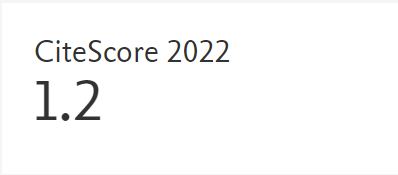Development of a methodology to determine the aromatic structural distribution in light and medium petroleum fractions by HPLC
Resumen
En este trabajo se presenta el desarrollo de una metodología para la cuantificación de especies aromáticas en fracciones livianas y medias derivadas del petróleo mediante Cromatografía Líquida de Alto Desempeño acoplada a un sistema de Detección de Arreglo de Diodos (HPLC-UV-DAD). El método propuesto se basa en la selectividad que presenta el sistema cromatográfico utilizado para separar y detectar los compuestos aromáticos con diferente número de anillos que permite cuantificar especies definidas como mono, di y tri-aromáticas respectivamente. Se generó un algoritmo matemático para obtener, a partir de los espectros ultravioleta de cada una de las familias de hidrocarburos identificada, la concentración de cada especie equivalente a la que generaría el método de espectrometría de masas de alta resolución. Se verificó la aplicabilidad del método en muestras livianas (diesel) donde se encontraron errores relativos promedio de 1,18%, 3,30% y 15,21% en la determinación de hidrocarburos mono, di y tri-aromáticos respectivamente. Posteriormente la metodología propuesta fue empleada en el análisis de gasóleos livianos y medios pero la exactitud del método no pudo ser determinada debido a la no disponibilidad de información de caracterización por espectrometría de masas para las muestras mencionadas. Esta técnica instrumental se presenta como una alternativa para la caracterización de productos derivados del petróleo en los cuales los métodos tradicionales de análisis no pueden ser aplicados.
Referencias bibliográficas
ASTM D 2007. (1998). Standard test method for characteristic groups in rubber extender and processing oils and other petroleum-derived oils by the clay-gel absorption chromatographic method.
ASTM D 4124. (1997). Standard test methods for separation of asphalt into four fractions.
ASTM D 6379. (2004). Standard test method for determination of aromatic hydrocarbon types in aviation fuels and petroleum distillates - High performance liquid chromatography method with refractive index detection.
ASTM D 6591. (2000). Standard test method for determination of aromatic hydrocarbon types in middle distillates - High performance liquid chromatography method with refractive index detection.
Boduszynski, M. M., Hurtubise, R. J., & Allen, T. W. (1983). Liquid chromatography / field ionization mass spectrometry in the analysis of high-boiling and non distillable coal liquids for hydrocarbons. Anal. Chem., 55 (2), 225-231. https://doi.org/10.1021/ac00253a014
Bouquet, M., & Brument, J. (1990). Characterization of heavy hydrocarbon cuts by mass spectrometry routine and quantative measurements. Fuel Sc. Techn., Int., 8 (9), 961-986. https://doi.org/10.1080/08843759008915968
Chaffin, J. M., Lin, M., Liu, W., Davison, R. R., Glover, C. J., & Bullin, J. A. (1996). The use of HPLC to determine the saturate content of heavy petroleum products. J. Liq. Chrom. & Rel. Technol., 19 (10), 1669-1682. https://doi.org/10.1080/10826079608005500
Fisher I. P, & Fisher P. (1974). Analysis of High boiling petroleum streams by High resolution mass spectrometry. Talanta, 21: 867-875. https://doi.org/10.1016/0039-9140(74)80224-9
Fourneron, J. (2001). A chromatospectroscopic method for analyzing the signals generated during high-performance liquid chromatography with diode-array detection. J. Chromatogr. Sci., 39: 160-164. https://doi.org/10.1093/chromsci/39.4.160
Gallegos, E. J., Green, J. W., Lindeman, L. P., LeTourneau, R. L., & Teeter, R. M. (1967). Petroleum group-type analysis by high resolution mass spectrometry. Anal. Chem., 39 (14), 1833-1838. https://doi.org/10.1021/ac50157a055
Pasadakis, N., & Varotsis, N. (2000). A novel approach for the quantification of the hydrocarbons groups in heavy petroleum fractions by HPLC-RI analysis. Energy & Fuels, 14 (6), 1184-1187. https://doi.org/10.1021/ef000072b
Pasadakis, N., & Varotsis, N. (2000). Optimization of the HPLC separation of aromatic groups in petroleum fractions. Fuel, 79 (12), 1455-1459. https://doi.org/10.1016/S0016-2361(99)00288-4
Pasadakis, N., Gaganis, V., & Varotsis, N. (2001). Accurate determination of aromatic groups in heavy petroleum fractions using HPLC-UV-DAD. Fuel, 80: 147-153. https://doi.org/10.1016/S0016-2361(00)00082-X
Qiang, D., & Lu, W. (1999). Hydrocarbon group-type analysis of high boiling petroleum distillates by HPLC. J. Petrol. Sci. Eng., 22 (1), 31-36. https://doi.org/10.1016/S0920-4105(98)00054-0
Rashid, H. A., Fakhri, N. A., Dekran, S. B., & Abdulla, N. I. (1989). Chromatographic separation and characterization of mono-, di- and triaromatic hydrocarbons in gas oil. Fuel Sci. and Technol., 7 (3), 281-291. https://doi.org/10.1080/08843758908962244
Robbins, W. K. (1998). Quantitative measurement of mass and aromaticity distributions for heavy distillates 1. Capabilities of the HPLC-2 system. J. Chromatogr. Sci., 36: 457-466. https://doi.org/10.1093/chromsci/36.9.457
Ronningsen, H. P., & Skjevrak. (1990). Characterization of North Sea petroleum fractions: aromatic ring class distribution. Energy and Fuels, 4 (5), 608-626. https://doi.org/10.1021/ef00023a035
Roussis, S. G., & Fitzgerald W. (2001). Hydrocarbon compound type analysis by mass spectrometry: On the replacement of the all-glass heated inlet system with a gas chromatograph. Energy & Fuels, 15 (2), 249-316. https://doi.org/10.1021/ef000225v
Sarowha, S. L. S., Sharma, B. K. Sharma, C. D., & Bhagat, S. D. (1996). Compositional studies on gas oil fractions using high-performance liquid chromatography. Fuel, 75 (11),1323-1326. https://doi.org/10.1016/0016-2361(96)00096-8
Sarowha, S. L. S., Sharma, B. K. Sharma, C. D., & Bhagat, S. D. (1997). Characterization of petroleum heavy distillates using HPLC and spectroscopic methods. Energy & Fuels, 11 (3), 566-569. https://doi.org/10.1021/ef960058s
Sink, C. W., & Hardy, D. R. (1994). Quantification of compound classes in complex mixtures and fuels using HPLC with differential refractive index detection. Anal. Chem., 66 (8), 1334-1338. https://doi.org/10.1021/ac00080a020
Varotsis, N., Pasadakis. N., & Gaganis, V. (1998). A novel approach for the characterization of aromatics in petroleum fractions using HPLC-UV-DAD and evolving factor analysis. Fuel, 77 (13), 1495-1502. https://doi.org/10.1016/S0016-2361(98)00050-7
Descargas
Derechos de autor 2006 Creative Commons Reconocimiento-NoComercial-CompartirIgual 4.0.

Esta obra está bajo una licencia internacional Creative Commons Atribución-NoComercial-CompartirIgual 4.0.












